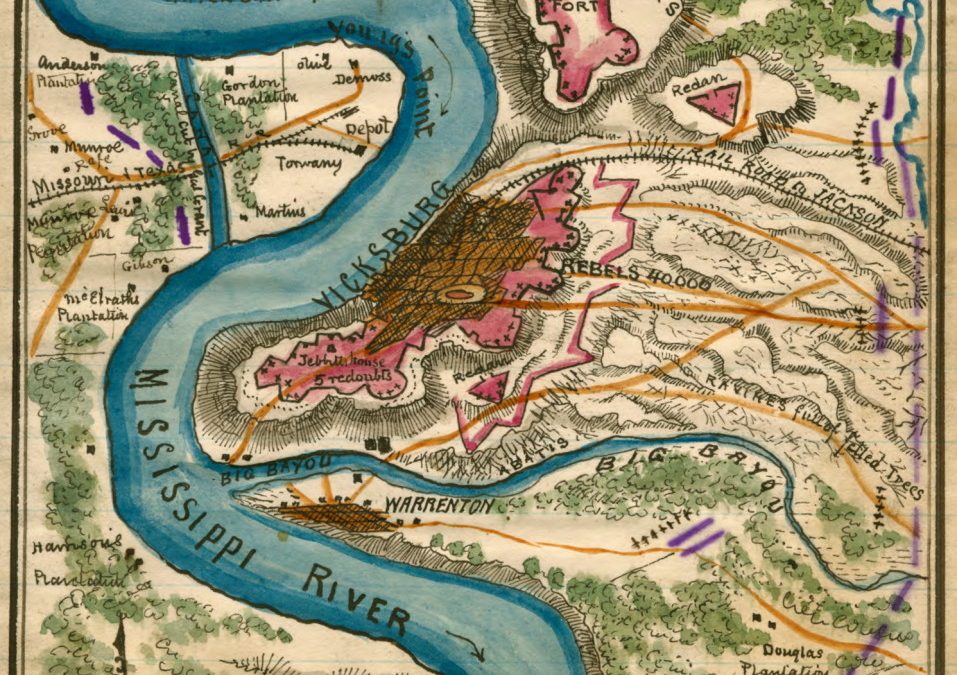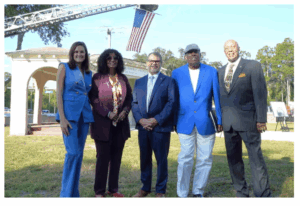While Grant was ready to strike and capture Vicksburg, it is important to understand the campaigning along the Mississippi River and in Tennessee. It was the strategic situation in the west in the spring of 1863 and Grant’s successful campaign against Vicksburg, it was also the ultimate phase of his campaigning. Let’s start with the major Union forces and what they were preparing to do in the west.

Grant’s Campaign against Vicksburg
Grant continued his campaign against Vicksburg, which was important in terms of visibility on the civilian front, both in North and the South. The operation unfolded with advances and retreats since December 1862. Everyone knew that North wanted to gain control of the Mississippi River. Vicksburg came as the most important point on the river, so it had great importance. It was in the news for so long that it became quite important to the North. The whole Gettysburg campaign was played out in less than a month. But Vicksburg was different because it presented a dramatic and easily grasped image: Vicksburg, a citadel on the Mississippi River.
Vicksburg Verdict
With that citadel, Vicksburg would either be captured by the North, an important success for them, or the Confederates would drive Grant away, and the Mississippi River would remain partially in Confederate hands. It was more or less a black and white verdict that would come from this effort. Vicksburg was not going to be the Gettysburg way.
Learn more about the presidential canvass of 1860 which was the most important in U.S. history.
Undue Attention for Vicksburg
The newspapers, letters and diaries from the spring and into the summer of 1863, on both sides of Union and Confederate, showed that the people had great interest in what was happening at Vicksburg. It was not like Fort Sumter in 1861 as it became the great focal point, but it was similar as more and more people gave attention to Vicksburg. Grant’s opponents in that operation were John C. Pemberton and Joseph E. Johnston.
This is a transcript from the video series The American Civil War. Watch it now, on The Great Courses Plus.
Race for Chattanooga

The second force under Nathaniel Prentice Banks, moved up the Mississippi River against Port Hudson, Louisiana–the second Confederate strongpoint on the river. The third operation was William S. Rosecrans’s Army of the Cumberland marching into southeastern Tennessee to confront Braxton Bragg’s Army of Tennessee. Chattanooga was the ultimate goal for that part of the campaigning. The North wanted Chattanooga while the Confederacy denied them the control. Grant, Banks and Rosecrans were the elements of Northern military. Grant moved forward in his Vicksburg campaign and showed his absolute best in that campaign.
Learn more about the crisis at Fort Sumter.
Grant, the Butcher!
The predominant image of Grant in much of what was written about the war was that of a clumsy, head-on fighter who didn’t know how to do anything except find where the enemy was, go straight at them and club the enemy into submission. He won battles because he piled his men in relentlessly. The image that he overwhelmed his opponents and the shorthand description of Grant was, ‘Grant, the butcher.’ That image came from the Overland campaign of 1864, the battles from the wilderness to Spotsylvania and Cold Harbor.
The emphasis on Grant’s generalship was because those events took place in Virginia which were magnified as compared to what happened elsewhere. People stressed that part of Grant’s Virginia record. Lost Cause writers helped spread that image especially after the war. They didn’t make it up because during the war there was criticism of Grant in the North as being a man who had too many casualties.
Role of the Lost Cause Writers

The Lost Cause writers enhanced Grant’s image, specifically to make Lee look better. They, in essence, said, here we have Lee, a gallant, very capable officer with his little Army of Northern Virginia, fighting off Grant, this clumsy butcher who has so many men that he can just keep relentlessly pressing against Lee until he finally wears Lee and his troops down.
Jubal Early, a Confederate general became one of the most prominent Lost Cause writers, a perfect example of those trying to portray Grant as minimally talented. His thought was was, “I might compare the pyramids in their majesty along the Nile to a pigmy perched on the shoulders of Atlas.” So, for Early, Grant was pigmy and Lee, the grand figure.
Vicksburg showed Grant more in the milieu that he preferred, as a soldier who maneuvered, thought and used guile and swift movement with least fighting. Grant was daring, resourceful and willing to take risks. His decision, for example, to have the naval vessels run past the batteries at Vicksburg was an example of his daring. When most of his subordinates opposed, he went ahead with it, to achieve success.
Learn more about the details of General Winfield Scott’s Anaconda Plan.
Grant’s Marching Success
Grant arrived in South of Vicksburg, east of the Mississippi River, near Bruinsburg with more than 20,000 men, ready to abandon his supply lines and strike into the interior of Mississippi where he lived off the land for that short campaign.
Over the first three weeks of May, he moved rapidly and succeeded against a variety of Confederate opponents. His 23,000 men were at Port Gibson, Mississippi on May 1. They defeated 8,000 Confederates in the first battle of the last phase of the Vicksburg campaign. William Tecumseh Sherman marched down the west side of the river to join Grant bringing his strength to 44,000 men in Mississippi.
Common Questions about the American Civil War
The operation led by William S. Rosecrans’s Army into southeastern Tennessee was to confront Braxton Bragg’s Army of Tennessee. Chattanooga was the ultimate goal for that part of the campaigning.
Grant arrived in South of Vicksburg, east of the Mississippi River. According to his strategy, he went near Bruinsburg with more than 20,000 men, ready to abandon his supply lines and strike into the interior of Mississippi, where he lived off the land for that campaign. H
The words which described Ulysses S Grant were that he as a soldier maneuvered, thought, and used guile and swift movement and the least fighting possible to defeat his enemy. Grant was daring, resourceful, and willing to take risks.
The Lost Cause writers enhanced Grant’s predominant image of a clumsy, head-on fighter who didn’t know how to do anything except find where the enemy was and go straight at them with total strength. It was specifically done to make Lee look better. According to them, Lee was a gallant, capable officer with little Army of Northern Virginia.
–thegreatcoursesdaily.com



